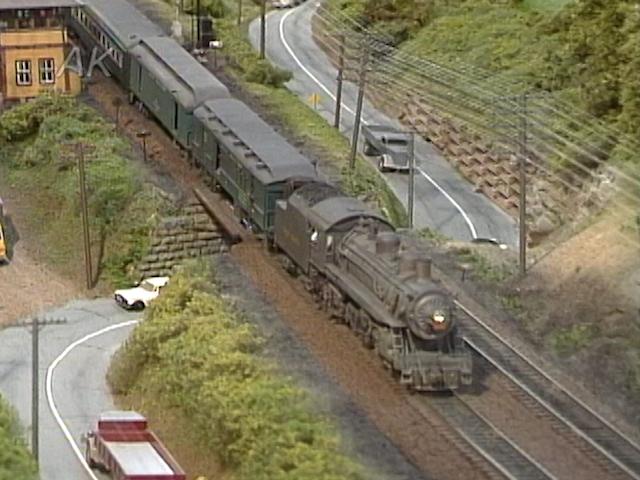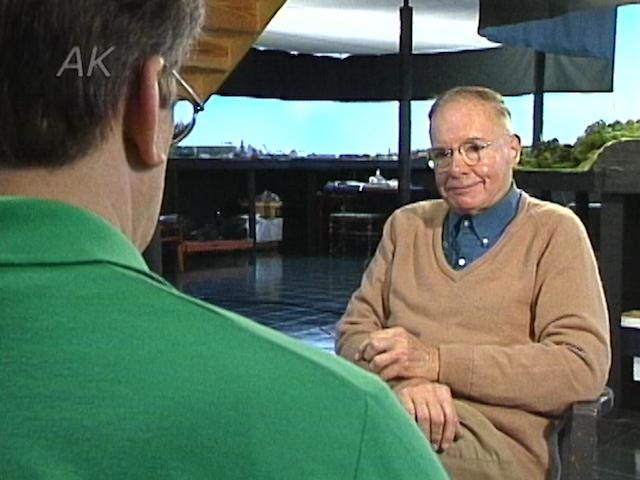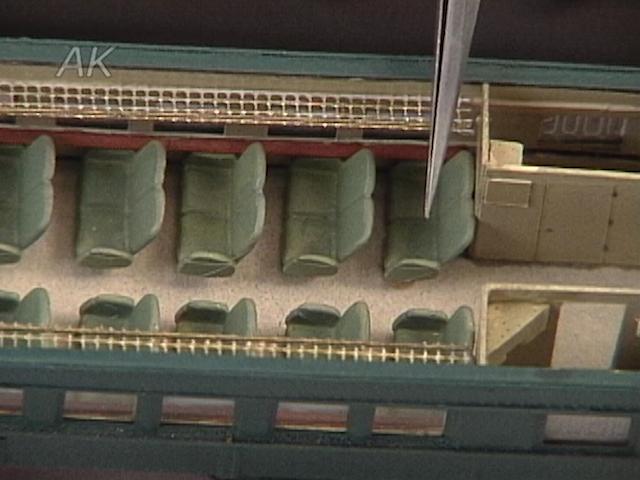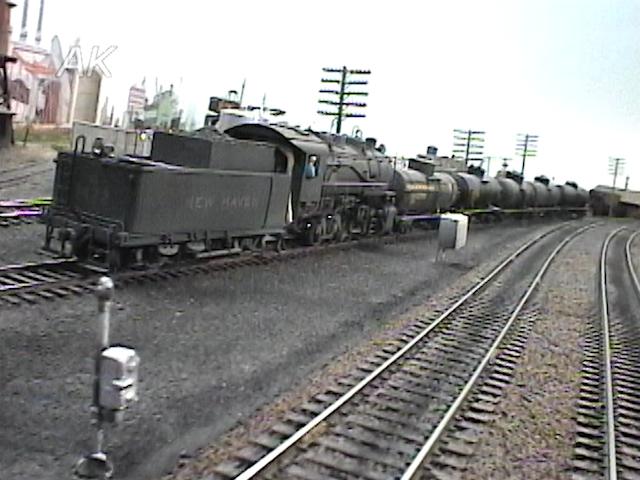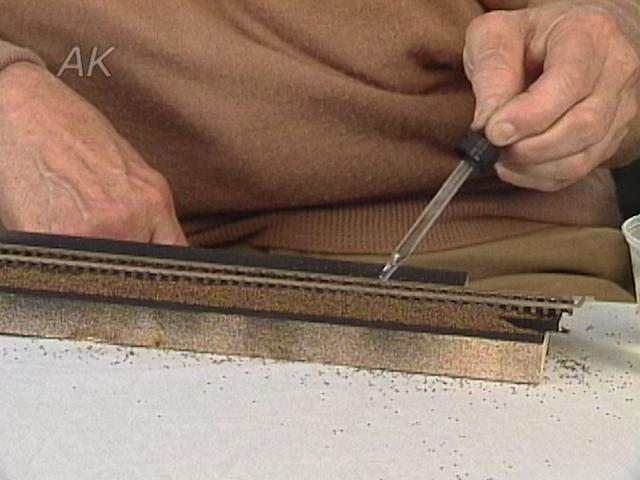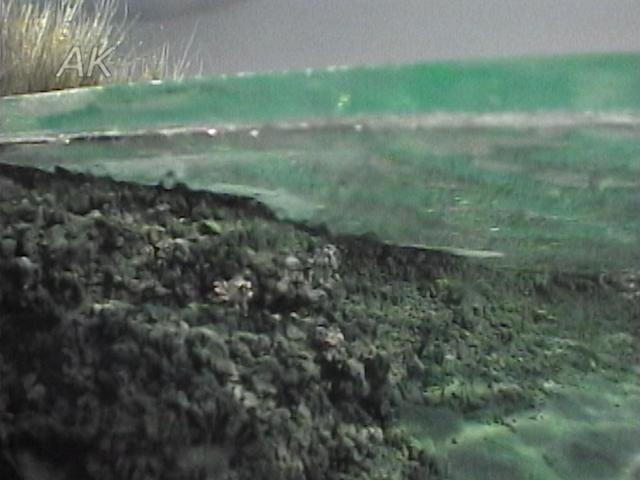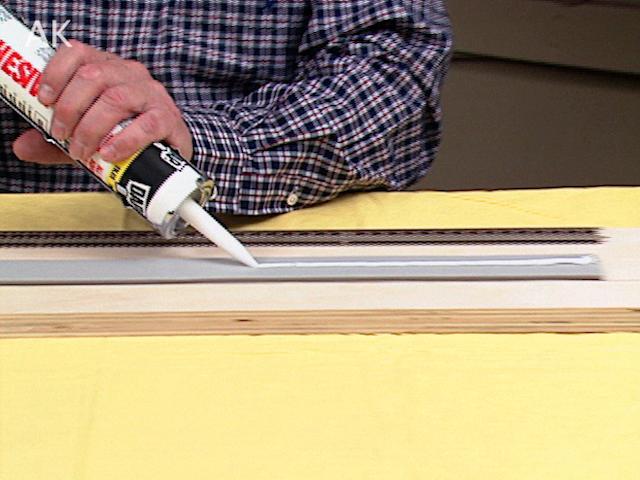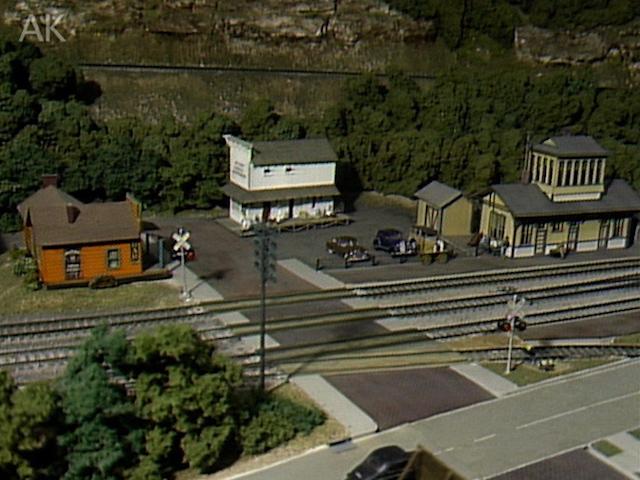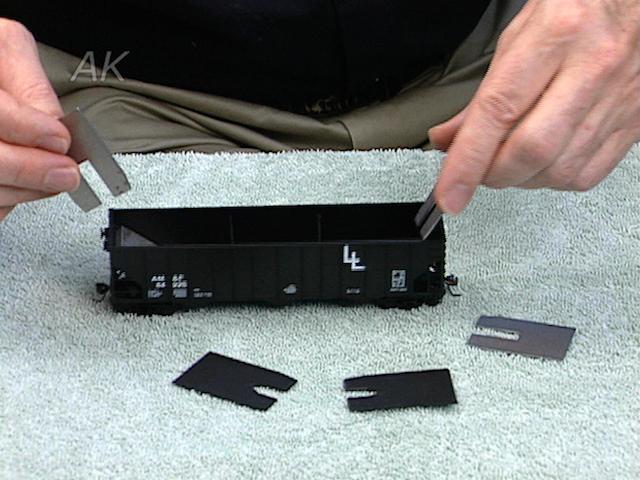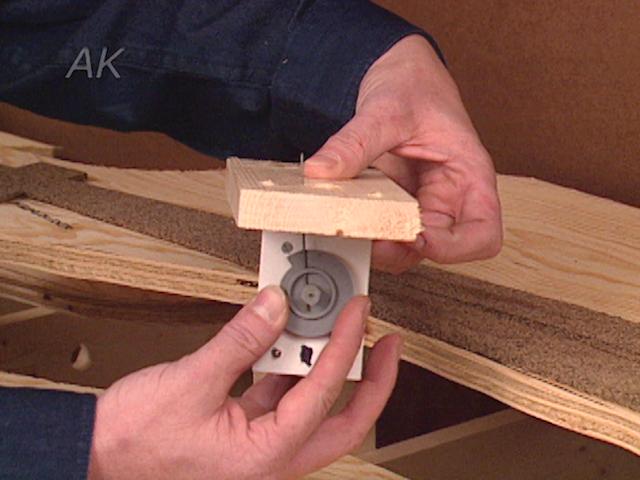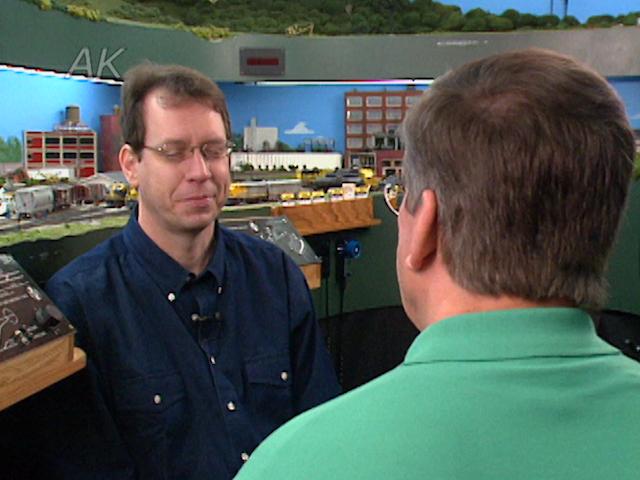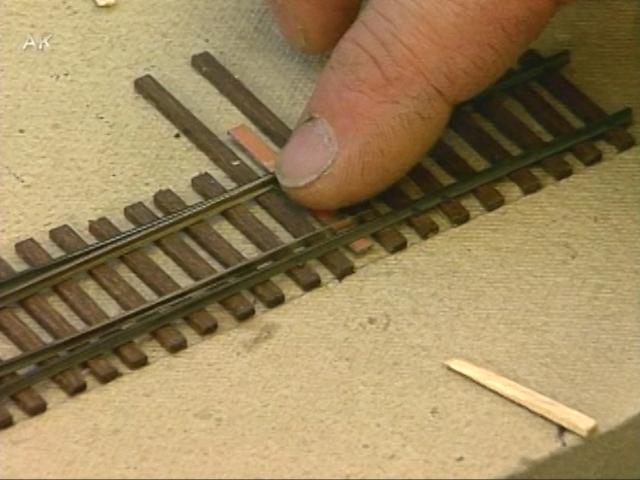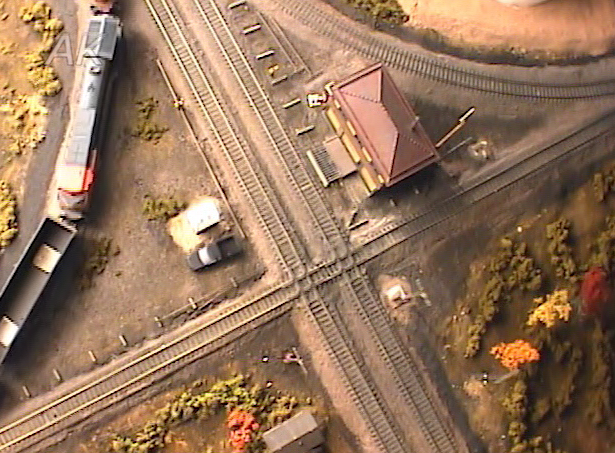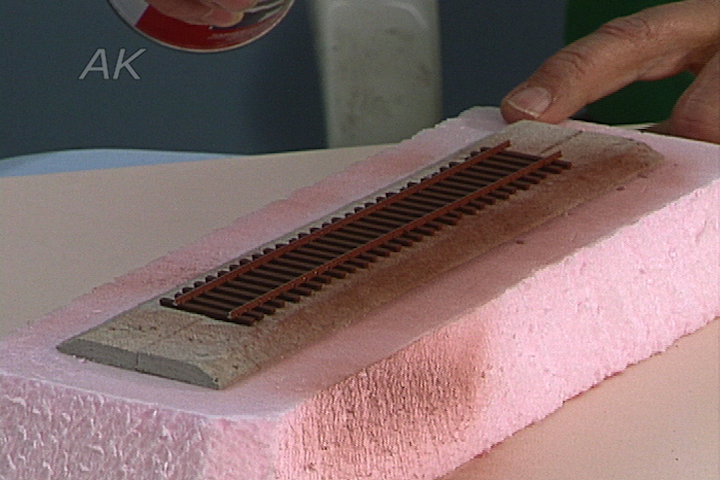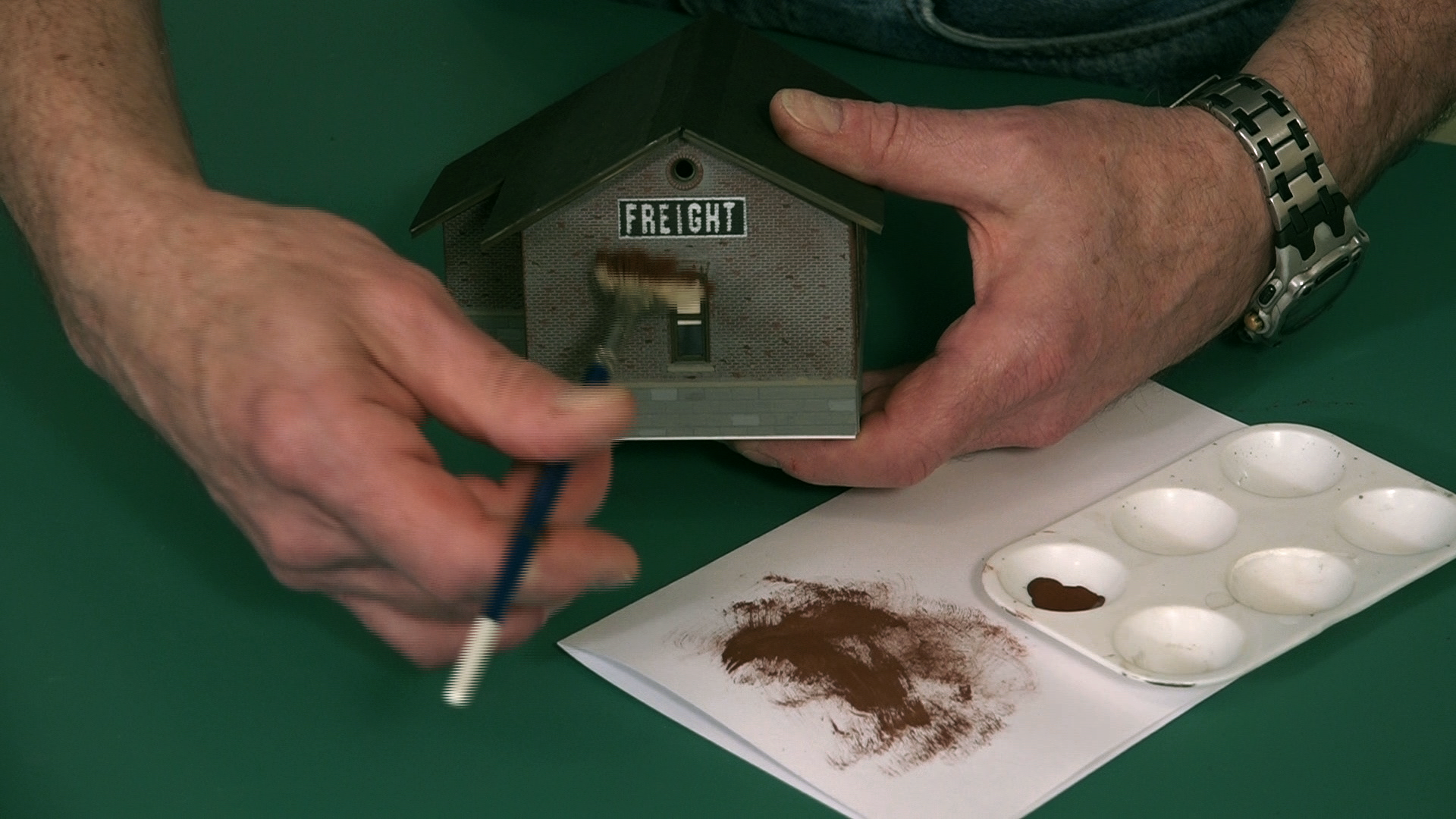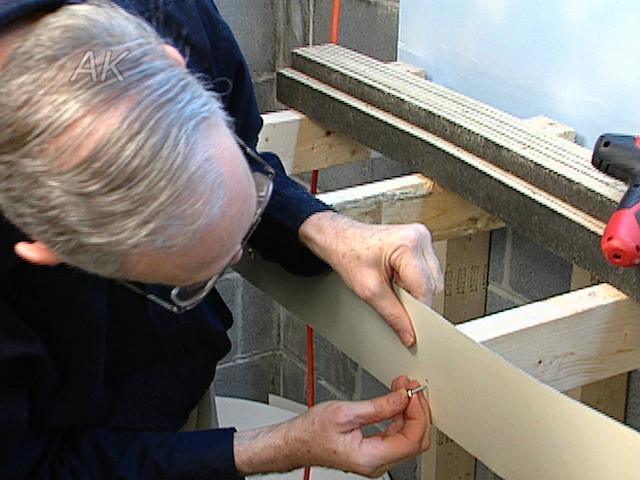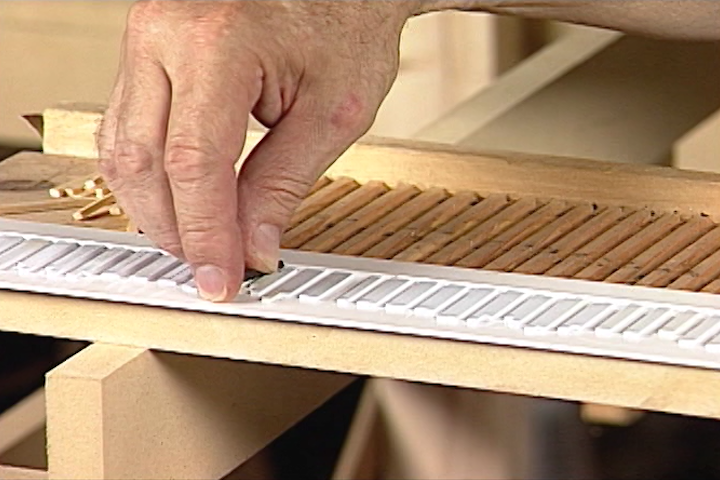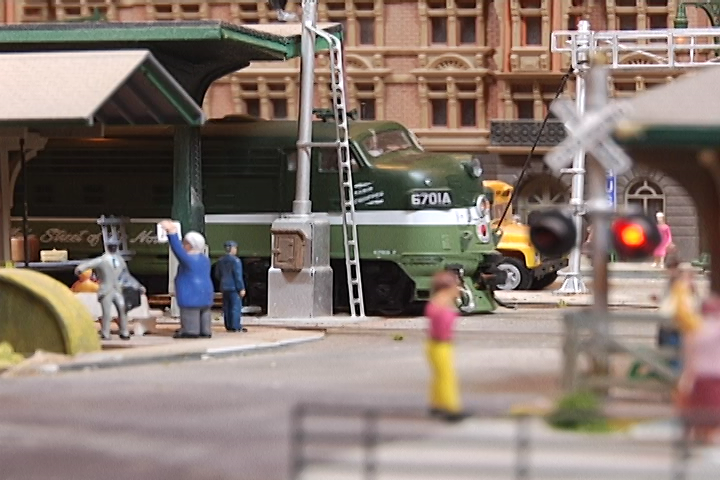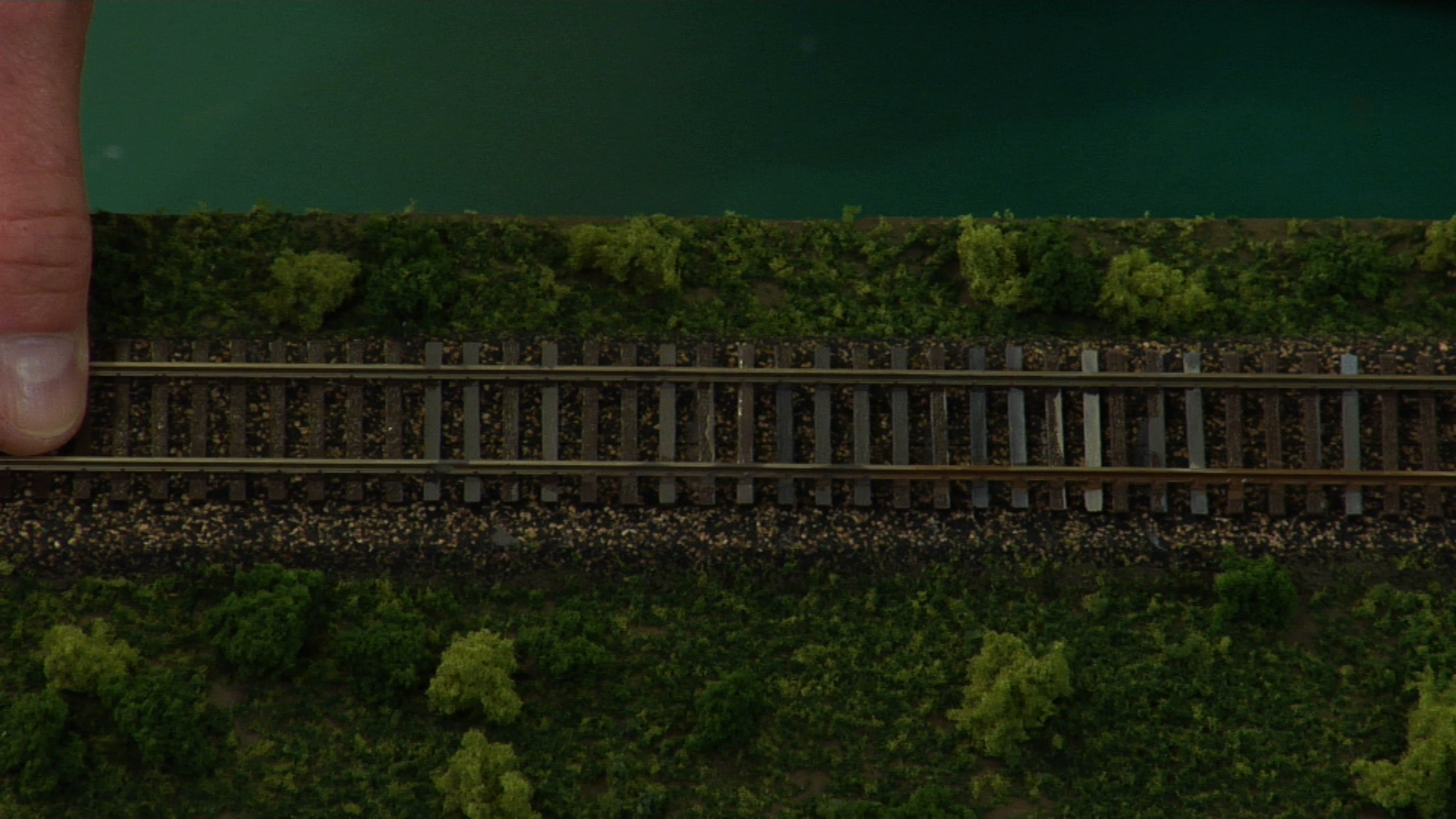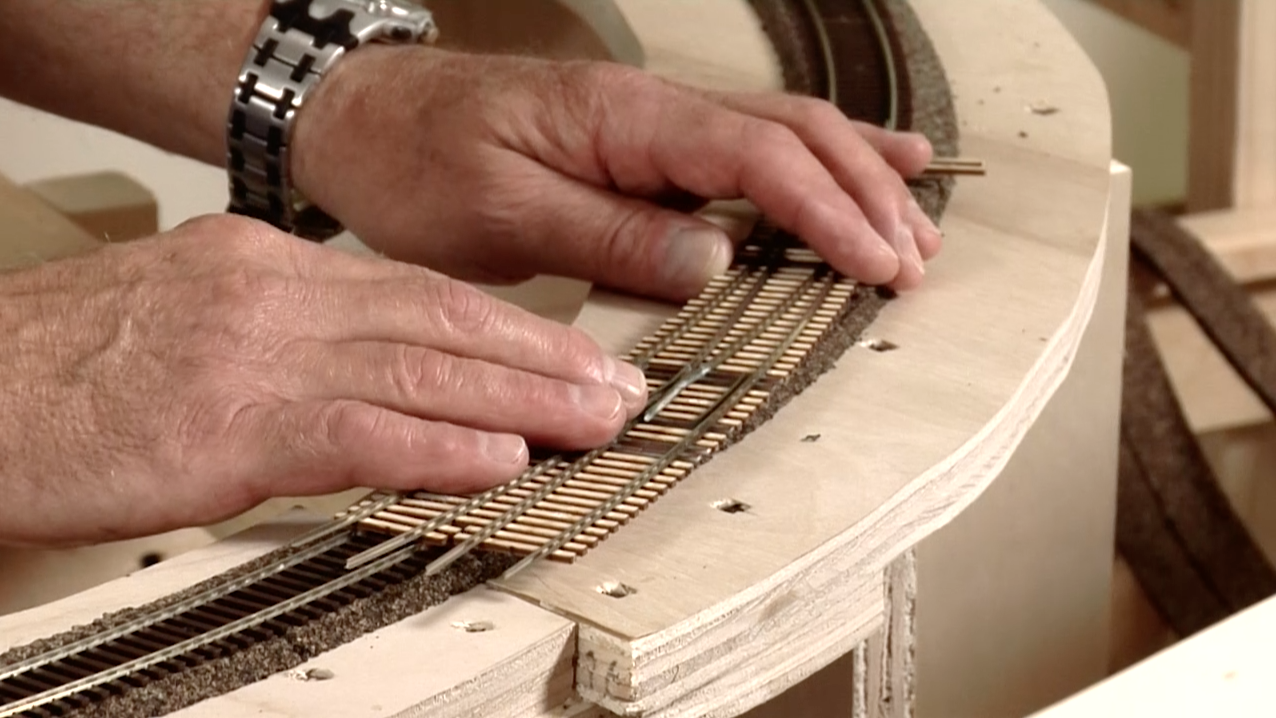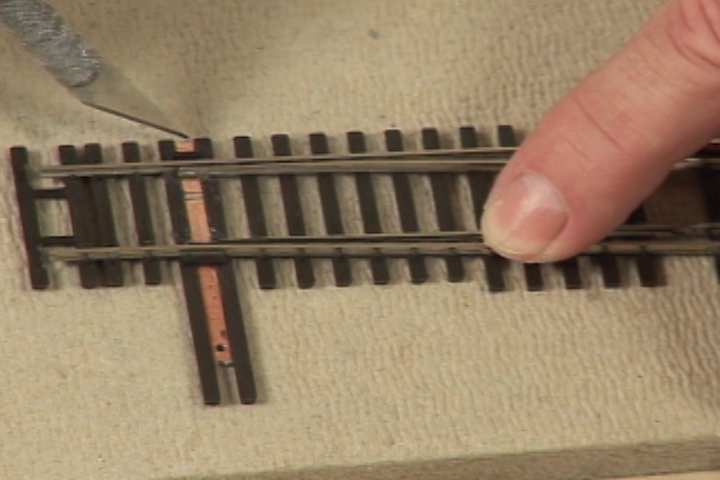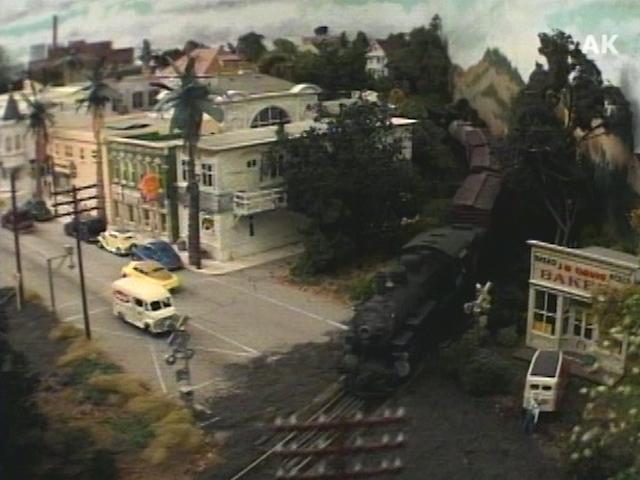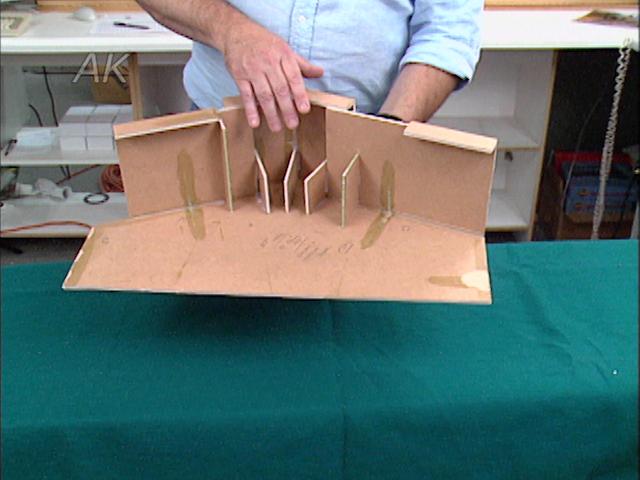
Laying Track and Ballast with Bill Aldrige
Bill AldrigeThe track on Bill Aldrige’s New York, New Haven and Hartford looks very realistic. His secret for replicating good looking track is using the three rail sizes that come in sections and look very realistic. The track sections are simply placed on top of the roadbed and a mixture of ballast is applied followed by the subballast, and finally the entire ballast is bonded together with Elmer’s white carpenter’s glue. The glue itself is made up of one part glue, two parts water, and one part isopropyl alcohol. The final ingredient and perhaps the most important of the adhesive mix is the Unichem, Inc sodium dioctylsulfosuccinate, a very potent wetting agent. A small amount of this will destroy all the surface tension in the adhesive and enable it to soak right into the roadbed.
The next step is applying the limestone ballast to the track. The original New Haven used a dark reddish brown limestone ballast. Bill simply pours it on and then brushes it into the sides to cover the baseboard underneath the track. Once this is done, he lines the ballast up with a straight edge since the New Haven had a very meticulously lined ballast on the main line. The final step is the application of the adhesive. He applies this with a medicine dropper after the ballast line is edged. This will soak in without disturbing the roadbed. He goes on to describe the black line on the roadbed. The track is not spiked down in this case because the adhesive, once dried, should be efficient enough to hold the track in place.
Explore videos by Bill Aldrige
You may be interested in
Premium Membership
Unlock exclusive member content from our industry experts.
- 24/7 Access to Premium Model Railroading Videos, Projects, and Tips
- Step-by-Step Instructional Guides & Layout Plans
- 50% Off Video Downloads Purchased in the Model Railroad Academy Shop
- Access to Ask the Expert Program
Unlock exclusive member content from our industry experts.
- 24/7 Access to Premium Model Railroading Videos, Projects, and Tips
- Step-by-Step Instructional Guides & Layout Plans
- 3 Full-Length Video Downloads to Watch Offline
- 50% Off Video Downloads Purchased in the Model Railroad Academy Shop
- Access to Ask the Expert Program
Gold Membership
$326 Value
Get everything included in Premium plus exclusive Gold Membership benefits.
- 24/7 Access to Premium Model Railroading Videos, Projects, and Tips
- Step-by-Step Instructional Guides & Layout Plans
- 9 Full-Length Video Downloads to Watch Offline
- 2 Full-Length Classes to Keep for Life
- 2 Downloadable Guides
- Discounts on Purchase-to-Own Content in the Model Railroad Academy Shop
- Access to Ask the Expert Program
- Exclusive GOLD LIVE Streaming Events


